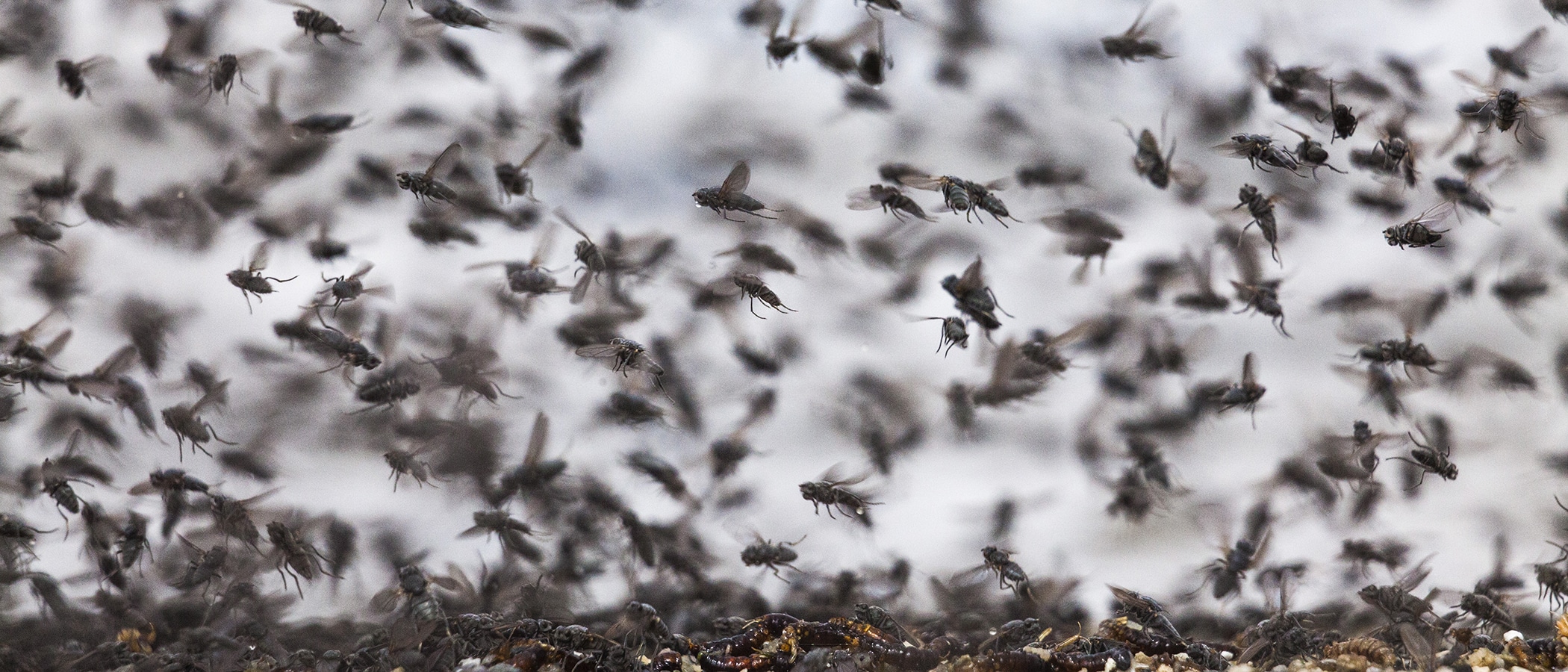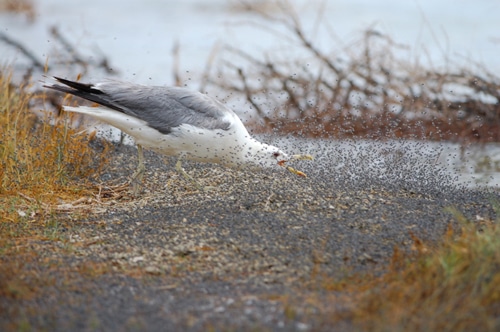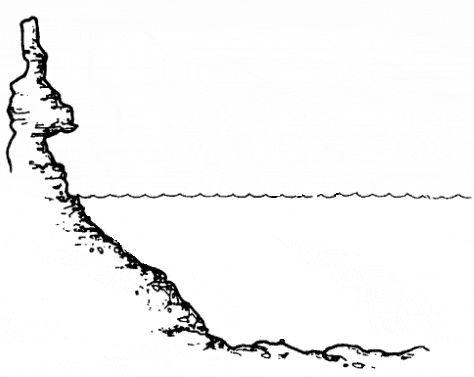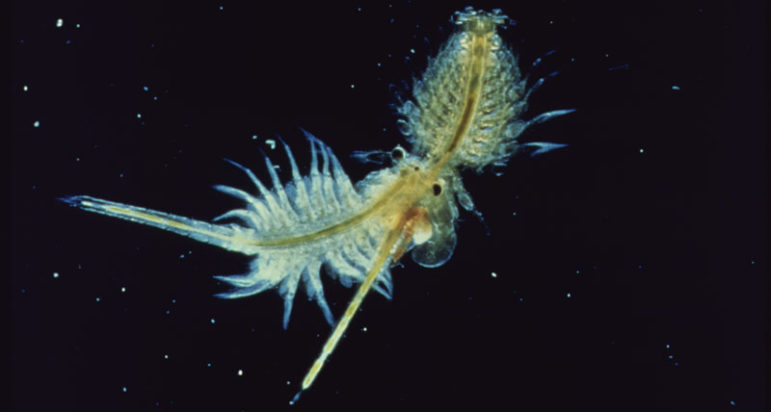
Mono Lake is like an all-you-can-eat buffet of flies and shrimp for the millions of birds that come here.

Alkali Flies
As you walk along the shore, you may notice swarms of alkali flies buzzing about, but don’t worry, these flies are just feeding on algae and will not bite you. These amazing creatures have small hairs on their wings which allow them to form an air bubble around themselves so they can “scuba dive” under water for a few minutes.

The flies lay their eggs underwater and these eggs will then hatch into larvae, which will swim in the lake feeding on algae. When a larva is ready to pupate, it will latch on to underwater tufa and form a protective case around itself as it metamorphoses into an adult. The native people, the Kootzaduka’a Tribe, collected the fly pupae and dried them in the sun for food rich in fat and protein. If you look under a loose tufa near the shoreline, you may find the fly pupae—a delicious snack. Pull one off and taste it! You can learn even more about Mono Lake’s alkali flies here.
Brine Shrimp

You may also see tiny translucent creatures swimming near the surface of the water. These are a native species of brine shrimp, found only in Mono Lake. The shrimp are also feeding on the algae and are expert osmoregulators, like the alkali flies, pumping salts and minerals out of their bodies to survive. In the winter, you will find the water empty of brine shrimp—all of the adults die off as the temperature drops, but a new generation of shrimp will hatch in early spring from eggs that overwinter at the bottom of the lake. Learn more about Mono Lake’s unique brine shrimp here.
Continue following the trail among the tufa towers, looking closely for the birds described on the following page.
Top photo by Floris van Breugel.
